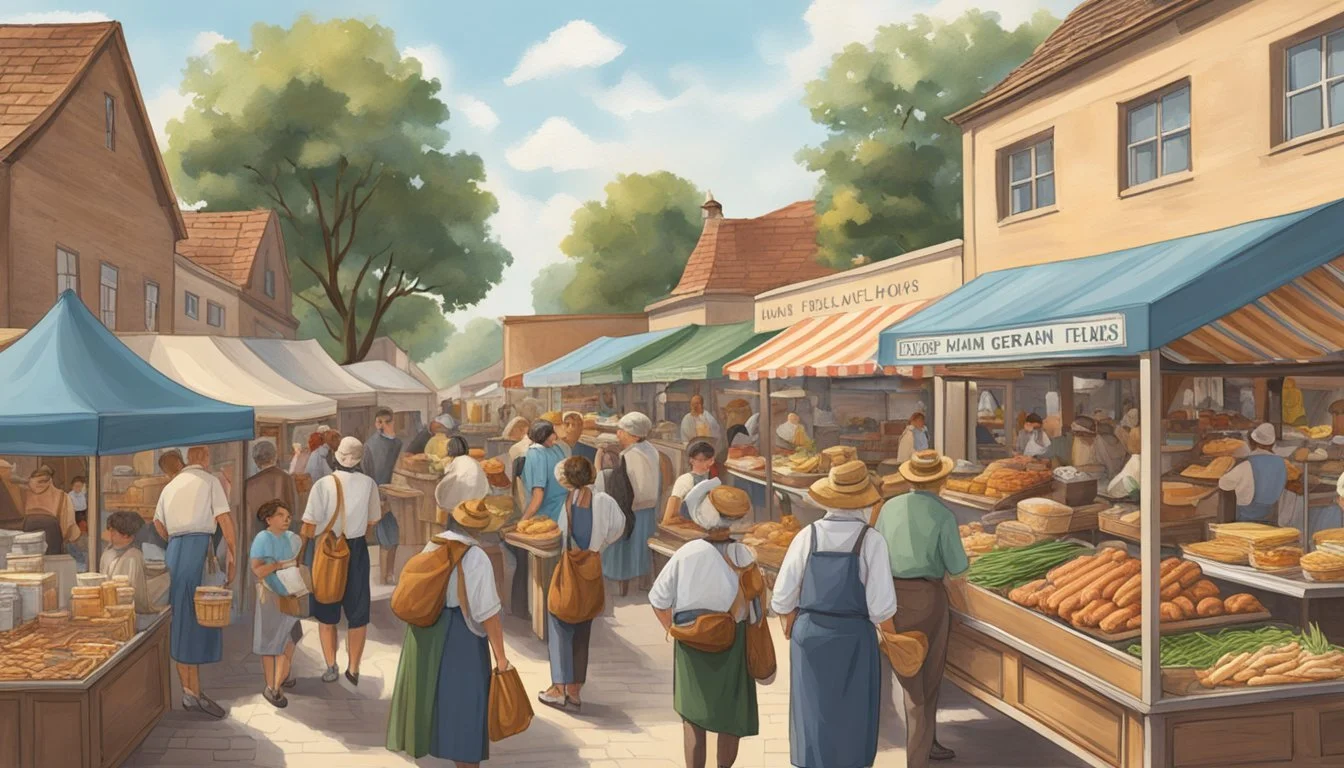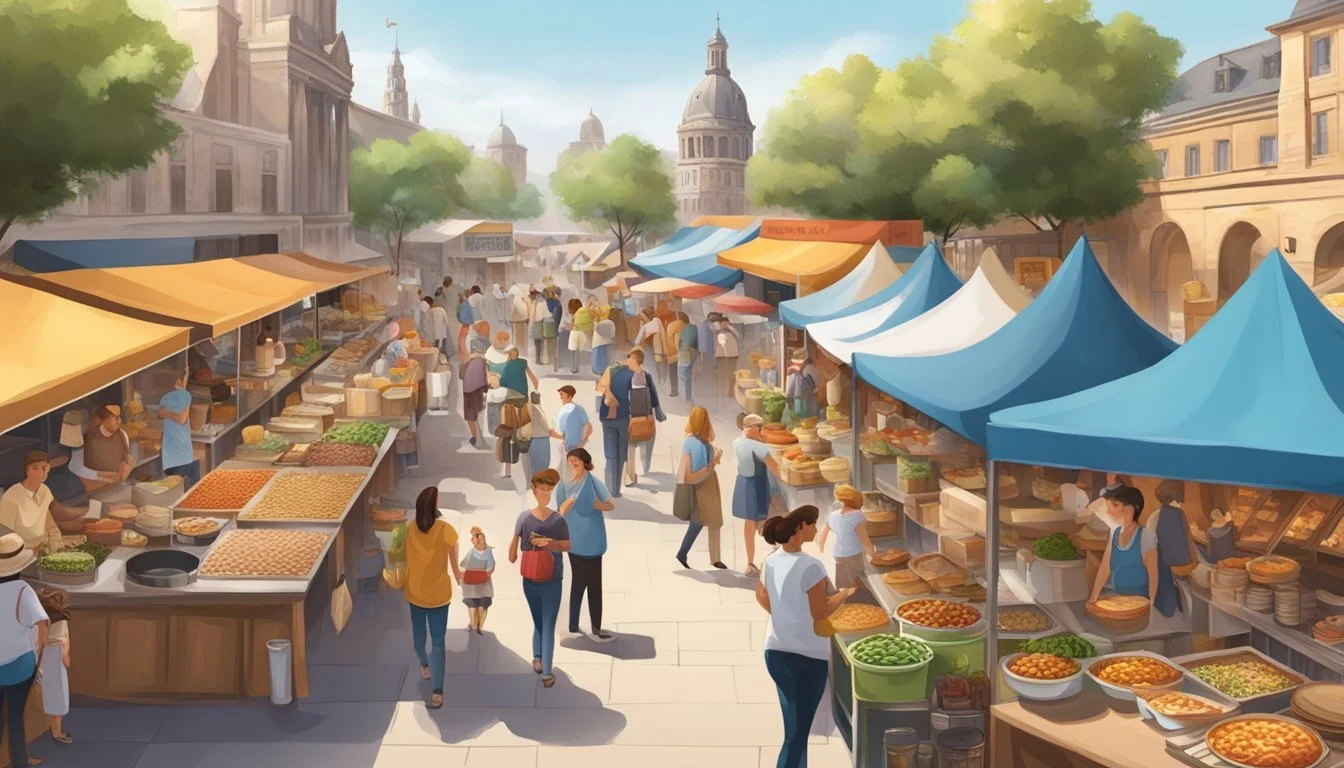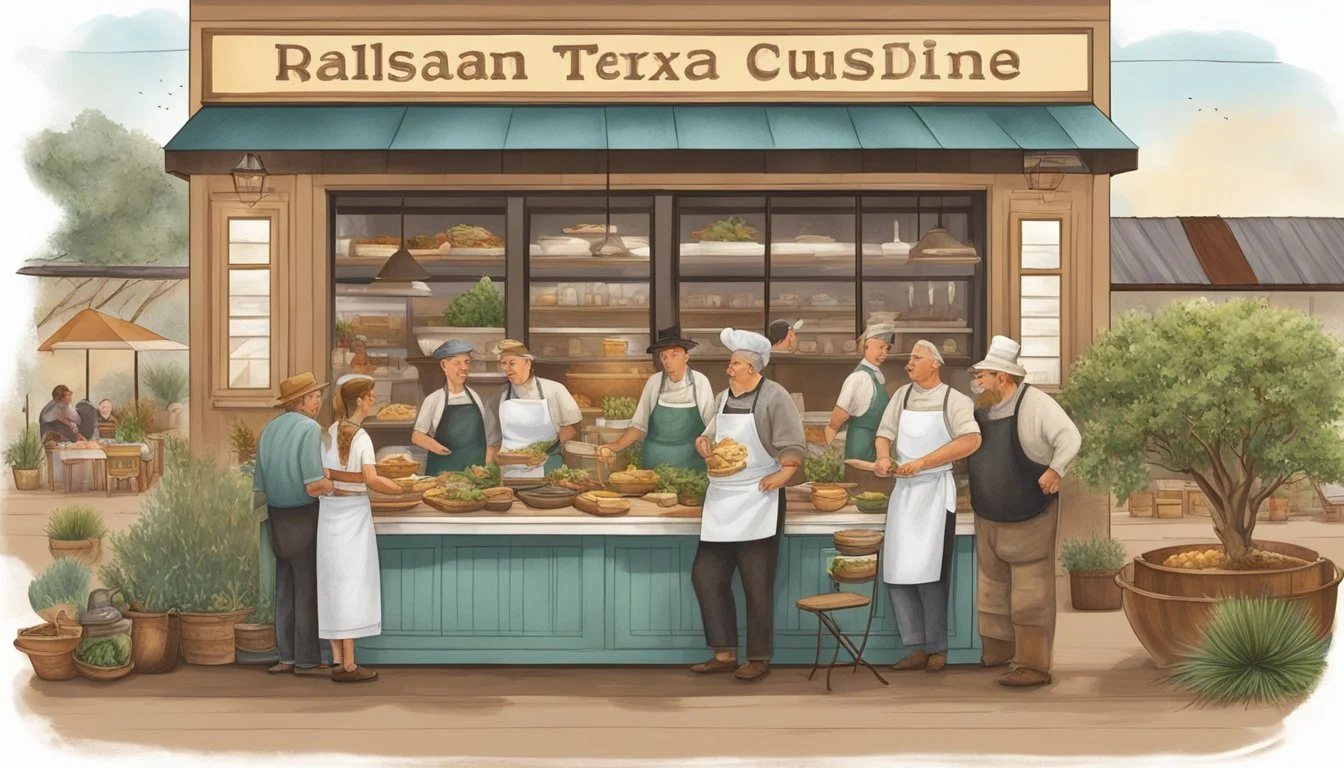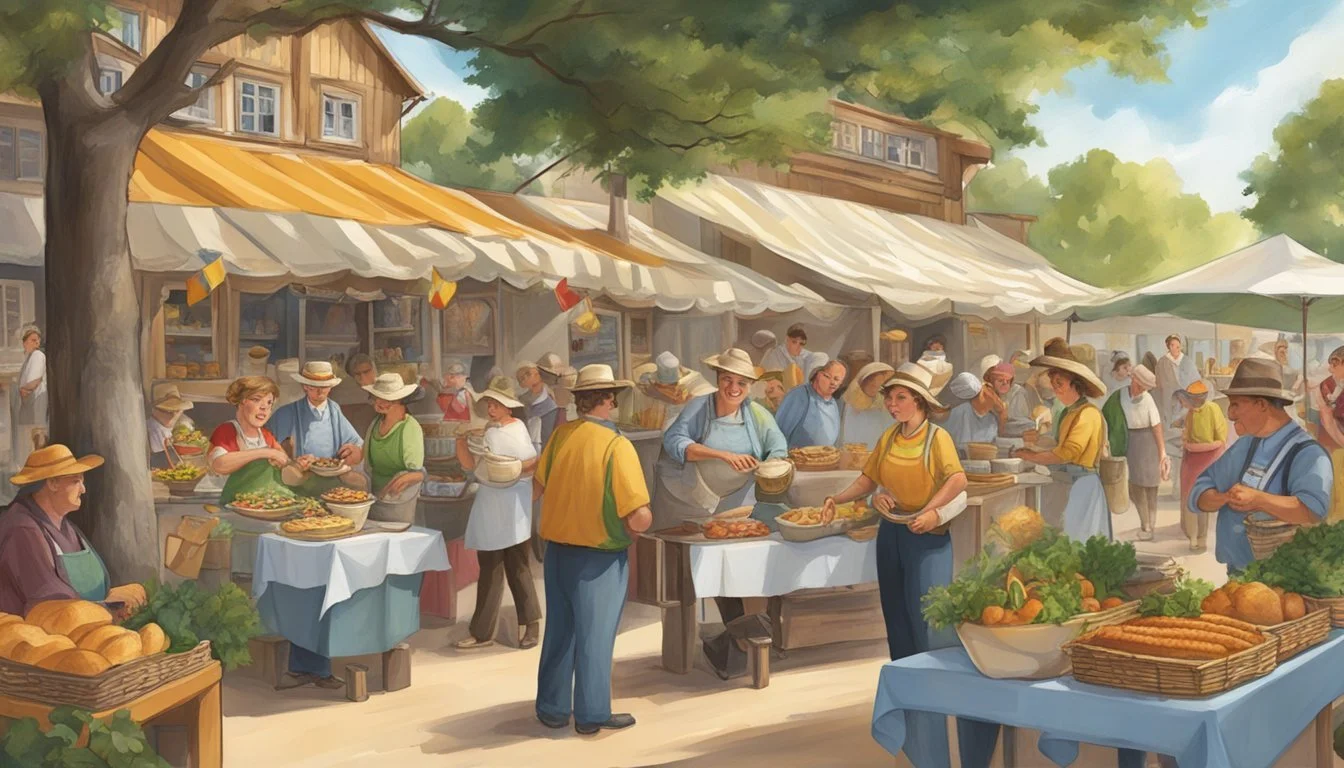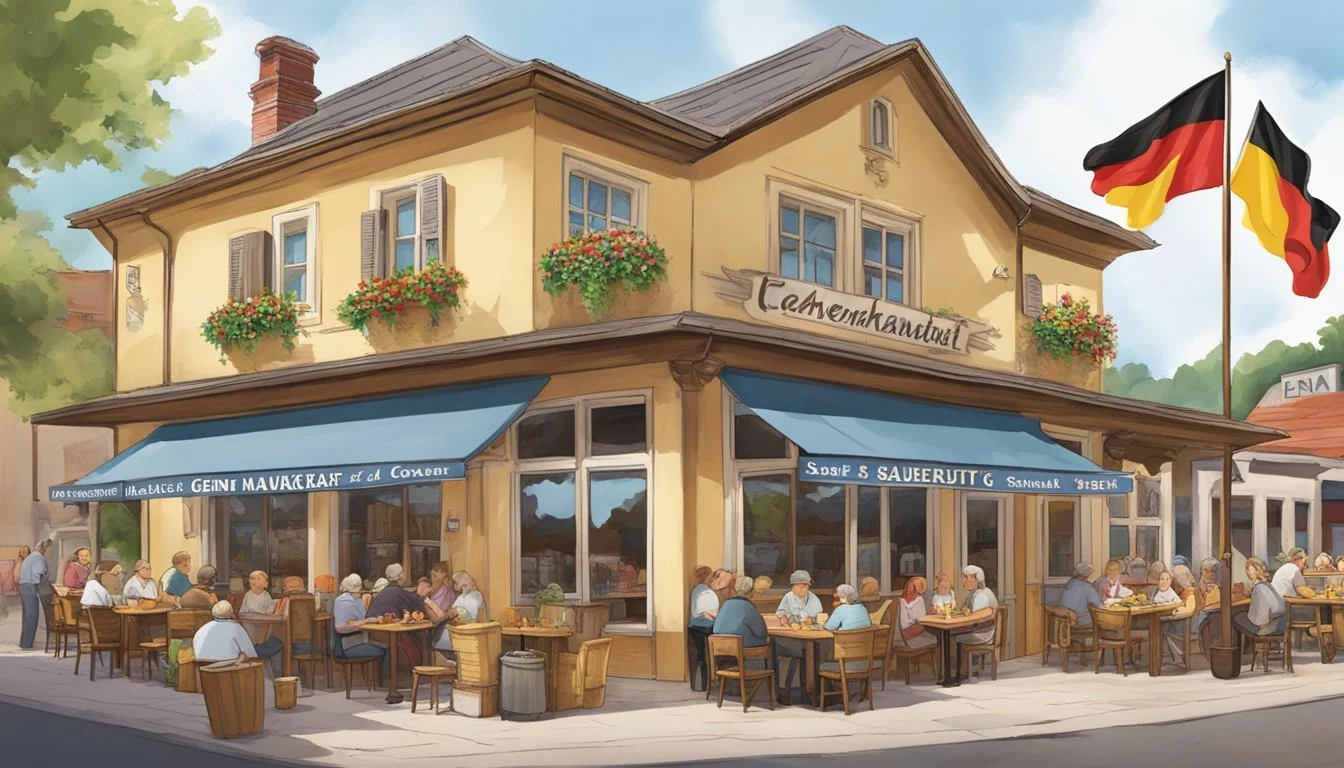The Influence of German Immigrants on Texas Culinary Tourism
Shaping the Lone Star State’s Flavor Profile
The culinary landscape of Texas is a tapestry woven with the threads of diverse cultures, and the contributions of German immigrants are particularly notable. Since the mid-19th century, German settlers have brought their rich gastronomic traditions to the Lone Star State, profoundly influencing its food culture. Their impact extends from the smoky tendrils of barbecue pits to the delicate pastries displayed in bakery windows, featuring a fusion of flavors that have become hallmarks of Texan cuisine. Throughout Texas, the German culinary heritage persists, not only in the family recipes passed down through generations but also in the celebrated food festivals that draw visitors from near and far.
In towns like Fredericksburg and New Braunfels, the German influence is palpable, with annual celebrations like Wurstfest highlighting traditional German fare amidst the Texan setting. This mingling of culinary practices is more than a historical footnote; it actively shapes Texas's identity as a destination for those seeking a taste of cultural fusion. German techniques and flavors, integrated with Texan ingredients and styles, have created a niche in the state's food tourism industry, offering both a nod to the past and a flavor of the present.
The story of German immigrants in Texas is a rich narrative of cultural adaptation and gastronomic innovation. From the establishment of the Adelsverein, aimed at protecting German settlers, to the indelible imprint they left on the state's culture and cuisine, their legacy is a testament to the dynamic nature of culinary evolution. As food lovers journey through Texas, they encounter a menu of experiences shaped by German hands, an edible anthology of the state's history and its continued evolution on the world's stage of flavor.
Historical Context
The German influence on Texas culinary tourism is rooted in a rich history that began during the 19th century with sizable German immigration, leading to the establishment of germanophile communities and a unique German-Texan identity.
First Wave of German Immigration
The First Wave of German Immigration to Texas commenced in the early 19th century. Johann Friedrich Ernst, often recognized as the "father of German immigration to Texas," became the first German settler in 1831, paving the way for his compatriots. The establishment of the Adelsverein, officially known as the Society for the Protection of German Immigrants in Texas, led by Prince Carl of Solms-Braunfels, marked a significant organized effort to settle German immigrants in Texas.
German Settlements in Texas
Several notable settlements were established due to the German influx, including Fredericksburg in Gillespie County, founded by Prince Carl of Solms-Braunfels in 1846, and New Braunfels, established a year earlier. These settlements often functioned as cultural hubs where German traditions were maintained and celebrated. John O. Meusebach succeeded Prince Carl and also played a pivotal role in negotiating peace treaties with native tribes, ensuring the prosperity of German enclaves.
German-Texan Identity Formation
The German-Texan identity evolved as settlers intertwined their customs with the local Texan fabric. The 19th century saw German-Texans establish institutions, schools, and churches, cementing their distinct cultural footprint. This cultural diffusion led to a unique culinary fusion, which is still evident in Texas's food offerings today, attracting tourists keen on exploring this hybrid of flavors.
Cultural Impact
The cultural impact of German immigrants on Texas is extensive, encompassing language, literature, architecture, religion, and festive music traditions. These contributions have significantly shaped the state's culinary tourism landscape.
Language and Literature
German influence is evident in the linguistic landscape of Texas. German words have integrated into the Texan lexicon, particularly names of foods and other culinary terms. Language schools and literary societies were established to preserve the German identity, and several books reflecting German heritage have been influential.
Architecture and Settlements
Settlement patterns of the German immigrants led to the establishment of distinctive rural communities and urban centers with notable German architecture. Iconic structures include the timber-framed houses and churches, which were often at the heart of these communities. The Lutheran and Catholic faiths played a role in community cohesion and influenced architectural design.
Religious Contributions
Religious life was a cornerstone of the German influence in Texas, with German immigrants establishing many Lutheran and Catholic churches. These institutions not only served as places of worship but also as community centers that upheld German traditions and solidarity.
Music and Festivals
German music remains a vibrant part of Texan culture. The traditional dance hall and lively festivals like Oktoberfest celebrations and Wurstfest continue to celebrate German culture through music. Polka and waltz tunes fill the air during these events, bringing together communities to revel in shared heritage.
Culinary Influence
The profound effects of German immigrants on Texas culinary tourism manifest in a unique food landscape that marries traditional German dishes with Texan flair. This intermingling of cuisines has led to a rich selection of foods that draw tourists seeking a taste of this distinctive fusion.
Introduction to German-Texan Cuisine
German settlers in Texas have introduced a variety of European culinary traditions, which have been heartily embraced and adapted by the local food culture. Central to this gastronomic merger are the Main Street storefronts in Texas Hill Country towns like Fredericksburg, where German gastronomy thrives alongside Texan flavors.
Famous German Dishes in Texas
From bakeries to beer gardens, the following German dishes have become staples in Texan cuisine:
Pretzels: Soft, twisted, and often served with mustards or cheeses. Sauerkraut: Fermented cabbage paired with meats for an acidity that cuts through rich flavors. Schnitzel: Breaded and fried veal or pork cutlets that have found a comfortable spot on Texan menus. Sauerbraten: A pot roast, usually of beef, marinated before slow-cooking as per tradition, now a featured dish in many restaurants. Strudel: A layered pastry with sweet fillings, such as apple, that has become a beloved treat.
Influence on Texas Barbecue
The confluence of German culinary techniques and Texas traditions has uniquely influenced Texas barbecue:
Meats: A shift to include more pork alongside the traditional beef found in Texas barbecue. Smoking Techniques: Adaptations of German smoking and grilling methods, using a mix of local woods. Spices: Introduction of spices like paprika in rubs that complement the traditional smoky flavor.
Specifically, Austin has become a hotspot where the impact of German influence on Texan barbecue is showcased, offering a range of smoked meats (What wine goes well with smoked meats?) seasoned with a blend of traditional German and Texan spices.
Economic and Industrial Contributions
German immigrants have profoundly influenced Texas's economic landscape, particularly in fields related to agriculture, brewing, and various trades and crafts. These areas showcase the blend of their expertise and labor, contributing significantly to the state's development.
Agriculture and Farming
German migrants brought advanced agricultural skills to Texas, integrating European techniques with the local environment. Their influence is evident in the emphasis on sustainability and diversity of produce, enhancing Texas’s agricultural industry.
Crops: Introduction of European plant varieties.
Livestock: Improved breeding practices for cattle and other livestock.
Brewing and Alcohol Production
The brewing industry in Texas owes much to German traditions, transforming it into a vital economic sector. German communities established some of the earliest breweries, combining their European brewing heritage with local resources.
Breweries: Founding of iconic Texan breweries with German roots.
Economic Boost: Job creation and tourism attraction in the brewing sector.
Building Trades and Crafts
German immigrants' labor and skills in the building trades contributed to Texas's infrastructure and industrial growth. One can witness their finespun work in the historic buildings and settlements.
Craftsmanship: Introduction of European architectural styles and techniques.
Economic Growth: Development of construction-related industries creating jobs and business opportunities.
Cultural Celebrations and Tourism
German influence on Texas culinary tourism is vividly showcased through a series of cultural celebrations and historic sites that attract visitors from across the globe. These festivities highlight traditions that are deeply ingrained in the local culture and offer immersive experiences into German heritage within the state.
Oktoberfest in Texas
Oktoberfest celebrations in Texas mirror those of Bavaria, with numerous towns across the Hill Country and Central Texas partaking in the annual festivities. Towns like Fredericksburg, host events replete with traditional Bavarian music, folk dances, authentic German food, and of course, a wide selection of beers. Oktoberfest here is a testament to the lasting German cultural influence, with participants often donning lederhosen as a nod to tradition.
Wurstfest and Other Events
Wurstfest takes the spotlight in New Braunfels, Texas, as one of the largest German festivals in the state. During this 10-day event in November, over 100,000 visitors descend upon the town to enjoy a feast of sausages, beer, and German customs. Beyond Wurstfest, Texas showcases its German heritage through other events such as:
Maifest and Christkindlmarkt, which preserve the seasonal aspects of German culture.
Heritage celebrations and smaller festivals in German-founded towns throughout Texas.
Heritage Tourism and Sites
Heritage tourism in Texas is enriched by German culture, from historical beer gardens to cultural heritage sites. Scholz Garten in Austin, established by German immigrant August Scholz, plays a significant role as one of the oldest operating beer gardens in the nation and a historical gathering place for the local German community. Preservation of such sites allows Texas to maintain a strong connection with its German roots while offering residents and tourists a cultural experience steeped in history and tradition.
Regional Focus on German Influence
Texas, with its rich tapestry of cultures, has a noticeable German influence visible within its culinary landscape. The German presence palpably shapes the region’s food scene, emphasizing a heritage that has been intertwined with Texan history since the 19th century.
New Braunfels and Comal County
New Braunfels, situated in Comal County, is a prime example of German influence in the Lone Star State. Established by German settlers in 1845, the area is celebrated for its authentic German bakeries and beer gardens. Wurstfest, a yearly festival in New Braunfels, highlights the community's dedication to preserving and showcasing their German culinary traditions with an array of sausages, pretzels, and strudels drawing visitors from far and wide.
Fredericksburg and Gillespie County
Fredericksburg, nestled in Gillespie County, is a testament to the German heritage that imbues the region. This community maintains a robust connection to its roots through delectable cuisines and Schützenfests (marksmen festivals). German-inspired pastries and the artisanal craft of brewing are profoundly influential, with establishments offering recipes that have been passed down through generations.
San Antonio's German Footprint
In San Antonio, German Texans have contributed significantly to the city's food industry, ever since German immigrants settled here in the 1840s. Schilo’s Delicatessen, a historic fixture since 1917, is renowned for its German-inspired fare, including hearty rye sandwiches and homemade root beer. San Antonio's "German Belt" reflects a culinary identity that embraces the unique fusion of Teutonic and Texan flavors.
Interaction with Other Cultures
The culinary landscape of Texas offers a rich tapestry of flavors, a testament to the German and Czech settlers' influence and their interactions with the existing cultures, including Native American tribes. This dynamic interplay has given rise to a distinctive cultural heritage within Texas cuisine.
The German-Czech Influence on Texas
German settlers introduced a variety of foods and brewing methods to Texas, with sauerkraut and pastries being notable examples of their gastronomic legacy. The Czech influence is similarly prominent, especially in the realm of baked goods. Both cultures have been pivotal in establishing Texas's reputation for its unique take on pastries and other European-inspired dishes.
Noteworthy German Contributions:
Baked goods: Bread, pretzels, and pastries.
Brewing culture: Beers and techniques in brewing.
Czech Influence Highlights:
Pastries: Czech kolaches have become a Texas staple.
Railroads: Czech settlements expanded and thrived alongside the growth of railroads, spreading their culinary influence.
Coexistence with Native American Tribes
The German settlers in Texas often found themselves in close proximity to the Comanche tribe. While there were instances of conflict, there were also periods of peaceful coexistence, marked by the exchange of goods and culinary methods. The signing of peace treaties facilitated a mutual respect and understanding that allowed for an exchange of food knowledge between the two cultures, although it did not completely eliminate tensions.
German Contribution to Multicultural Texas
The Adelsverein, a society established to protect German immigrants in Texas, played a critical role in promoting immigration and settlement. Through such efforts, German culture was woven into the fabric of Texas's multicultural fabric. Today, German culinary traditions continue to coexist alongside other cultural influences, showcasing Texas's acceptance and celebration of its diverse roots.
Key Adelsverein Impacts:
Immigration and settlement: Helped establish German communities.
Agricultural Techniques: Influenced local farming practices.
German settlers did not just coexist with other cultures but played a key role in shaping the cultural heritage of Texas through their culinary traditions and agricultural practices. Their legacy and its interaction with the diverse cultures in Texas make up an integral part of the state's identity and culinary tourism scene today.
Conclusion
German immigrants have significantly shaped the culinary landscape of Texas. They introduced a range of flavors and traditions, blending their rich heritage with the local culture, resulting in a unique gastronomic experience that contributes to Texas's culinary tourism. Texas Hill Country, in particular, remains a vibrant testament to German influence, with towns like Fredericksburg and New Braunfels celebrating German cuisine (What Wine Pairs Perfectly With German Cuisine) through festivals and culinary events.
German pastries and baked goods have a notable presence in Texan bakeries, offering an authentic taste of German craftsmanship to locals and tourists. From savory sausages to delightful strudels, the German heritage thrives within Texan kitchens, creating a niche for culinary enthusiasts eager to explore this amalgamation of cultures.
The influx of Germans in the mid-19th-century led to a lasting impact not only on Texas's food culture but also on the state's identity. As a result, culinary tourism in Texas often highlights the German gastronomic influence, inviting visitors to explore the historical and cultural journey of German immigrants and their contribution to the state’s culinary arts.
The fusion of German culinary customs with Texan hospitality continues to attract food lovers from all states and beyond, strengthening Texas's position as a hub for cultural and culinary diversity. This blend serves as a reminder of how immigration enriches regional cuisines, and Texas stands as a prime example of this phenomenon.

